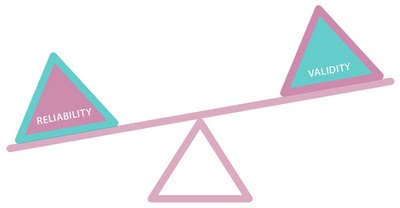Design Advantage : The Secret to Creating Long-Term Value 7
Design Advantage : The Secret to Creating Long-Term Value 7
Derived from: Roger Martin's The Design of Business
RAP5 : The Reliability Bias
PROFIT : Reliability, predictability and consistency are crucial for business. They enable us to make promises to our customers and deliver. They enable us to earn income to pay staff wages, overheads and get ahead. They also slow movement down the Knowledge Funnel thwarting innovation. Here’s some thoughts on how you can reduce your Reliability Bias.
Reliability is based upon taking action within a single truth - 'This is how we do things around here!'
In contrast, Validity says there are multiple truths. ie. There are many valid or suitable ways of doing things.

Reducing Reliability
Past Persistence
When the future resembles the past, it’s likely you have a reliability bias. Check how strong the demand for proof is when you’re allocating resources.
Eliminating Bias
‘The numbers will tell us the answer.’ Sometimes that’s correct and sometimes not. Relying on numerical data is one way to work. It’s important to be aware of it’s limitations.
Time Pressures
Reliable systems speed up analysis and judgement. Yet automated systems are not always accurate. Just ask stockmarket traders when the market plunges for no apparent reason. Being strong and valuing your management acumen is important too.
Valuing Validity
Redefine Proof
When we rely on the past to prove the future we finish up living in a world called ‘We’ve always done it that way.’ Sometimes we have to question our assumptions and basic proofs.
Embrace Subjectivity
Attempts to remove subjective judgements ramp up the pursuit of reliability. Turn off the stats and make an informed decision that includes your intuitive thoughts of what might happen.
Take Your Time
When do we need to know? Sometimes we simply get in an unnecessary hurry. Instead of merely ticking the boxes, take the time to question what is going on. Ask the question, ‘Is this valid?’ Is this accurate, authentic or credible?
One of the aims of employing Design Thinking is to offset the bias toward Reliability and make room for Validity.
Labels: Business Design, Design, Design Advantage, Design Thinking, Roger Martin, The Design of Business


0 Comments:
Post a Comment
<< Home